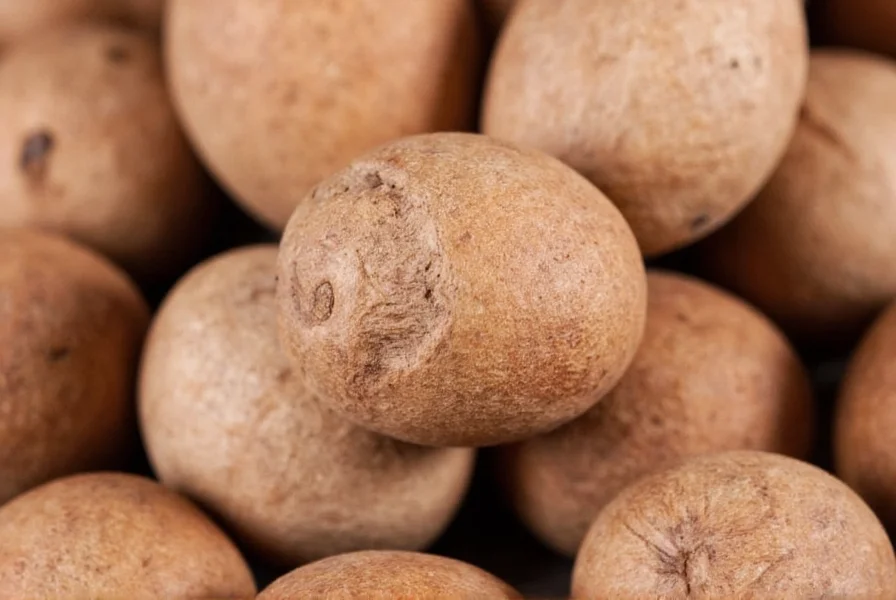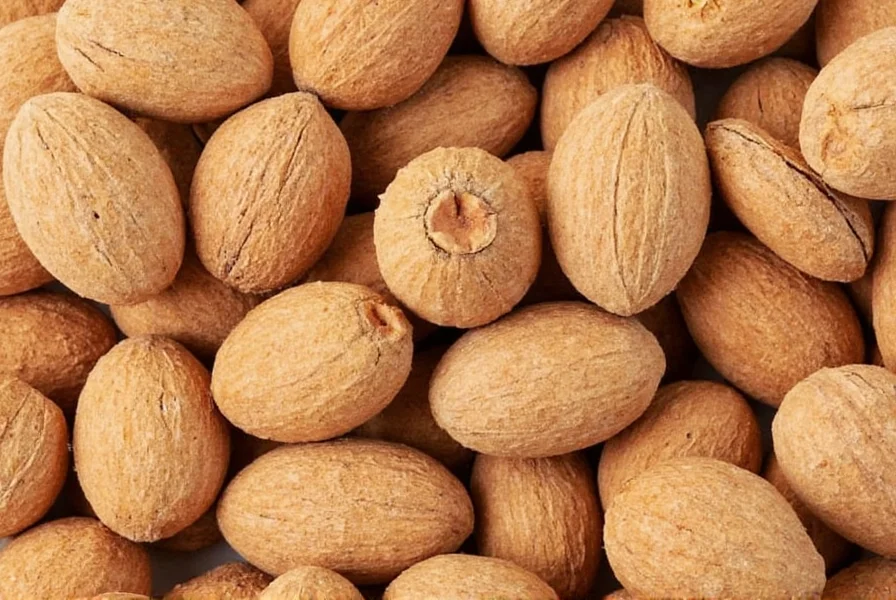Nutmeg has journeyed from being one of history's most coveted spices to a humble kitchen staple found in pantries worldwide. This small, oval seed delivers an outsized impact on flavor profiles across global cuisines. Understanding how to select, store, and use nutmeg properly transforms ordinary dishes into extraordinary culinary experiences.
The Botanical Origins of Nutmeg
The Myristica fragrans tree produces two distinct spices from a single fruit: nutmeg comes from the seed, while mace is the lacy red aril that surrounds it. Native to the Maluku Islands of Indonesia, this evergreen tree requires specific tropical conditions to thrive, typically reaching maturity after seven to nine years. Each fruit contains one nutmeg seed encased in a crimson mace covering, which processors carefully separate during harvest.
When shopping for nutmeg, understanding this botanical relationship helps explain why mace often appears in recipes alongside nutmeg. Though they share flavor characteristics, mace offers a more delicate, slightly citrusy profile compared to nutmeg's deeper, warmer notes. This distinction matters when following traditional recipes that specify one spice over the other.

Historical Significance and Global Trade
Nutmeg's history reads like an adventure novel. During the 16th and 17th centuries, European powers waged wars and established monopolies over the Spice Islands to control nutmeg production. The Dutch went so far as to destroy nutmeg trees on all but a few islands to maintain scarcity and drive up prices. This historical context explains why nutmeg appeared in medieval European recipes primarily in wealthy households—it was literally worth its weight in gold.
Today, nutmeg cultivation has expanded beyond its Indonesian origins to include Grenada, India, Malaysia, and Sri Lanka. Grenada has become particularly renowned for high-quality nutmeg, even featuring the spice on its national flag. This global distribution has made nutmeg more accessible while maintaining its status as a premium spice.
Flavor Profile and Culinary Applications
Nutmeg's complex flavor profile combines warmth, sweetness, and subtle bitterness with hints of pine, citrus, and clove. This versatility makes it indispensable in both sweet and savory applications. In savory cooking, nutmeg enhances creamy sauces like béchamel and cheese-based dishes, where it balances richness without competing with other flavors. It's essential in classic French sauce béchamel, German käsespätzle, and Italian ragù.
For sweet applications, nutmeg complements fruits like apples, pears, and bananas, making it a staple in fall baking. Unlike stronger spices such as cinnamon or cloves, nutmeg provides background warmth rather than dominating the flavor profile. This characteristic makes it particularly valuable in recipes where subtle complexity matters more than bold spice notes.
| Cuisine Type | Traditional Nutmeg Applications | Recommended Amount |
|---|---|---|
| European | Béchamel sauce, potato gratin, meatloaf | 1/8 tsp per serving |
| Middle Eastern | Rice pilafs, lamb stews, spice blends | 1/4 tsp per dish |
| Caribbean | Rum cakes, sweet potato pudding | 1/4-1/2 tsp per recipe |
| Indian | Garam masala, biryanis, kormas | Pinch per serving |
Whole Nutmeg vs Ground Nutmeg: A Critical Comparison
The difference between whole and ground nutmeg represents one of the most significant quality distinctions among common spices. Whole nutmeg retains its essential oils and aromatic compounds far longer than pre-ground versions. When freshly grated, whole nutmeg delivers a vibrant, complex flavor that pre-ground spice simply cannot match.
Consider these key differences when deciding which form to use:
- Flavor intensity: Freshly grated nutmeg provides 3-4 times more aromatic compounds than pre-ground
- Shelf life: Whole nutmeg maintains quality for 2-3 years; ground nutmeg loses potency within 6-12 months
- Texture: Freshly grated nutmeg has a finer, more consistent texture ideal for sauces
- Cost efficiency: Whole nutmeg costs slightly more upfront but delivers better value over time
For serious home cooks, investing in a dedicated nutmeg grinder—a small, fine-holed metal grater—proves worthwhile. These specialized tools create the perfect consistency for incorporating nutmeg into sauces and batters without producing bitter shavings.
Optimal Storage Techniques for Maximum Freshness
Proper storage dramatically extends nutmeg's shelf life and preserves its delicate flavor compounds. Exposure to air, light, and heat causes rapid degradation of the essential oils responsible for nutmeg's characteristic aroma. Follow these storage guidelines to maintain peak quality:
- Store whole nutmeg in an airtight container away from direct light
- Keep in a cool, dark cupboard (not near the stove or oven)
- Never store nutmeg in the refrigerator where moisture can damage it
- For long-term storage (beyond 18 months), consider freezing whole nutmeg
Ground nutmeg requires even more careful handling. Purchase small quantities that you'll use within 3-6 months, and store in opaque containers to minimize light exposure. The moment you open a container of ground nutmeg, check for aroma—if you can't detect a distinct scent, the spice has likely lost its potency.
Health Considerations and Safety Guidelines
While nutmeg offers several potential health benefits when used as a culinary spice, it's crucial to understand its dual nature. In normal cooking amounts (typically 1/8 to 1/4 teaspoon per serving), nutmeg provides antioxidants and may support digestion. However, consuming large quantities (one tablespoon or more) can cause nutmeg poisoning due to myristicin, a compound that acts as a psychoactive substance in high doses.
Symptoms of excessive nutmeg consumption include:
- Dry mouth and throat
- Nausea and vomiting
- Increased heart rate
- Disorientation or hallucinations
- Severe cases may require medical attention
These effects typically appear 1-8 hours after consumption and can last up to 24-48 hours. For safe culinary use, always measure nutmeg carefully and avoid consuming it in concentrated forms. Children and pregnant women should be particularly cautious with nutmeg consumption.
Effective Substitutes When Nutmeg Isn't Available
When a recipe calls for nutmeg but you don't have any on hand, several alternatives can provide similar flavor profiles. The best substitute depends on whether you're using nutmeg in a sweet or savory application:
- Mace: Use 3/4 the amount of mace as nutmeg (1:0.75 ratio)
- Allspice: Works well in sweet applications but stronger in savory dishes
- Ginger-cinnamon blend: 1/2 tsp ginger + 1/4 tsp cinnamon per 1/4 tsp nutmeg
- Pumpkin pie spice: Contains nutmeg plus complementary spices
Remember that no substitute perfectly replicates nutmeg's unique flavor. Mace comes closest since it originates from the same fruit, but has a more delicate profile. When substituting, start with smaller amounts and adjust to taste, as other spices often have more pronounced flavors than nutmeg.
Professional Cooking Techniques with Nutmeg
Mastering nutmeg usage elevates your cooking from good to exceptional. Professional chefs employ several techniques to maximize nutmeg's impact:
- Add nutmeg early in cooking for savory dishes to allow flavors to meld
- Grate directly into sauces and soups for even distribution
- Use freshly grated nutmeg as a finishing touch on creamy dishes
- Pair with black pepper to enhance flavor release
- Combine with complementary spices like cinnamon in sweet applications
When working with béchamel or other white sauces, add nutmeg after the roux has cooked but before adding milk—this allows the spice to toast slightly in the fat, releasing more flavor compounds. For baked goods, mix nutmeg with dry ingredients to ensure even distribution throughout the batter or dough.

Conclusion: Mastering the Art of Nutmeg Usage
Nutmeg's journey from rare luxury to kitchen essential demonstrates its enduring culinary value. By understanding how to select, store, and use this versatile spice properly, home cooks can significantly enhance their dishes. The key takeaway remains simple: always choose whole nutmeg over pre-ground when possible, store it properly, and use it judiciously to complement rather than dominate your recipes. With these principles in mind, you'll unlock nutmeg's full potential as one of cooking's most valuable flavor enhancers.
Frequently Asked Questions
What's the difference between nutmeg and mace?
Nutmeg and mace come from the same fruit of the Myristica fragrans tree. Nutmeg is the seed itself, while mace is the lacy red membrane (aril) that surrounds the seed. Mace has a more delicate, slightly citrusy flavor compared to nutmeg's deeper, warmer profile. In recipes, use 3/4 teaspoon of mace for every 1 teaspoon of nutmeg called for.
How much nutmeg should I use in recipes?
For most recipes, 1/8 to 1/4 teaspoon of freshly grated nutmeg per serving provides optimal flavor without overpowering other ingredients. In baking recipes serving 8-12 people, 1/4 to 1/2 teaspoon total is typically sufficient. Remember that nutmeg's flavor intensifies during cooking, so it's better to start with less and adjust after the dish has simmered.
Can nutmeg be toxic?
Yes, nutmeg can cause toxicity when consumed in large quantities (one tablespoon or more). This is due to myristicin, a compound that acts as a psychoactive substance in high doses. Symptoms include dry mouth, nausea, increased heart rate, and disorientation. However, when used in normal culinary amounts (typically 1/8 to 1/4 teaspoon per serving), nutmeg is perfectly safe for consumption.
How long does whole nutmeg last?
Properly stored whole nutmeg maintains its quality for 2-3 years. Store it in an airtight container away from light and heat. Ground nutmeg loses potency much faster—typically within 6-12 months. The best indicator of freshness is aroma; if you can't detect a distinct scent when you open the container, the nutmeg has likely lost its potency.
What are the best substitutes for nutmeg?
The best nutmeg substitutes depend on the recipe type. Mace is the closest alternative (use 3/4 the amount). For sweet dishes, try a blend of 1/2 teaspoon ginger and 1/4 teaspoon cinnamon per 1/4 teaspoon of nutmeg. Allspice works in some applications but has a stronger flavor. Pumpkin pie spice contains nutmeg plus complementary spices and can work as a substitute in baking recipes.











 浙公网安备
33010002000092号
浙公网安备
33010002000092号 浙B2-20120091-4
浙B2-20120091-4